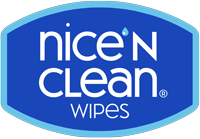Why Using Moist Toilet Tissue is Healthier than Using Toilet Paper

We’re not trying to be cheeky, but when you reach for a wad of toilet paper, are you sure it’s the healthiest way to wipe? Granted, we’ve made great strides in the personal hygiene department as a species, especially when you realize we’ve used everything from leafy greens to corn cobs and even pages from the Old Farmer’s Almanac to wipe our tender nether regions. But while toilet paper has been “splinter-free” since the 1930s, it still isn’t the most effective way to ensure we’re truly clean with nothing left behind.
Using moist toilet tissue—such as septic-safe flushable wipes—is a much better choice than using toilet paper because what’s left behind isn’t just irritating and unhygienic, it may also be unhealthy.
Toilet Paper: Potential Risks
We’ve been taught from the time we’re potty trained that cleanliness matters because we can get ill from diseases transmitted via feces. And the science bears this out—cholera, hepatitis, and E. coli, as well as urinary tract infections (UTI), are prime examples of the diseases found in fecal matter. Recent studies have found the coronavirus in feces, as well.
The general belief is that the more toilet paper we use, and the more vigorously we rub, the cleaner we’ll be.
Unfortunately, this is not the case.
Toilet paper may leave behind fecal matter
Toilet paper’s top selling point has always been its absorbency—and for something to be absorbent, it first needs to be dry. But logic tells us that dryness isn’t necessarily a good thing. In fact, toilet paper actually leaves feces on the skin because it’s dry.
Toilet paper may cause skin tears
Moreover, the skin in this particular area of the body is extremely delicate and sensitive, and rubbing this skin repeatedly opens it up to the creation of painful anal fissures, which are tears in the lining of the rectum that can bleed and become infected with bacteria. These tiny tears can take as many as 12 weeks to heal.
Aggressive wiping can also lead to irritated hemorrhoids—swollen veins in the lower rectum and anus that are more serious than fissures and may require medical attention.
Toilet paper may cause infections
Wiping correctly with toilet paper is also extremely important. If one wipes from back-to-front, bacteria is pulled from the anus toward the front of the body. This is especially harmful for women as it can cause a urinary tract infection from the bacteria entering the urethra. Experts also agree that fragrances, bleach, and other chemicals used in toilet paper can cause irritation in the vulva and vagina, as well as yeast infections and vulvitis.
Wiping too roughly can cause micro cuts in the vaginal area as well, which can lead to irritation, swelling, and infection. Experts recommend that a woman should dab, rather than wipe, to avoid this type of damage.
“The tissue in that area is very delicate, so you should make sure you’re not being too rough when you wipe,” says Jessica Shepherd, MD, an Assistant Professor of Clinical Obstetrics and Gynecology and Director of Minimally Invasive Gynecology at the University of Illinois College of Medicine at Chicago.
Wetter is Better—No Ifs, Ands, or Butts
Rather than relying only on dry toilet paper, most experts suggest introducing a wet element to your personal cleanliness regime, whether it be in the form of a bidet or the use of moist toilet tissue. This helps ensure complete and gentle removal of bodily waste and bacteria from your skin.
Truly flushable wipes (also called moist toilet tissue) are pre-moistened with a cleansing solution specially formulated to gently and effectively clean after using the toilet. They can be used independently or in conjunction with regular toilet paper. There are many types available, with different features to consider—everything from fragrance options, textured or untextured, wipe size, and even packaging size—when shopping for flushable wipes.
Before purchasing moist toilet tissue, check the packaging to make sure it’s flushable and septic-safe. Don’t assume all brands are safe to flush down the toilet.
LEARN MORE: Flushable Wet Wipes vs. Toilet Paper: Which is Better?
Use Nice 'N CLEAN® Wipes to Protect the Planet and Your Bottom
Nice 'N CLEAN® Flushable Wipes are truly flushable* wipes that are sustainably made with plastic-free, renewable plant-based fibers. Made with EcoFlush® technology, they are free of alcohol, parabens, phthalates, and chemical binders to provide a clean and refreshing shower-fresh feeling after each use.
Another sustainable option to consider? Biodegradable flushable wipes, like Nice ’N CLEAN® SecureFLUSHTM Technology Flushable Wipes, are made with 100% biodegradable** plant-based fibers. These soft yet durable wipes break apart in water 5 times faster than the leading toilet paper does.
Ultra-strong, gentle, and soothing, both varieties of flushable wipes offered by the Nice ’N CLEAN® brand are designed to check all the boxes on sustainability, personal hygiene, convenience, and comfort.
*Safe for well-maintained sewer and septic systems. Not recommended for use with motorhomes or basement pump systems.
**When disposed of in the toilet
References:
- https://www.independent.co.uk/life-style/toilet-paper-stop-use-wet-wipes-doctor-health-problems-bidets-a8028906.html
- https://www.glamour.com/story/heres-how-your-toilet-paper-could-be-messing-with-your-vagina
- http://www.toiletpaperhistory.net/invented-toilet-paper/who-invented-toilet-paper/
- https://www.cdc.gov/library/covid19/pdf/2020-09_08-Science-Update_FINAL_public-v2.pdf




